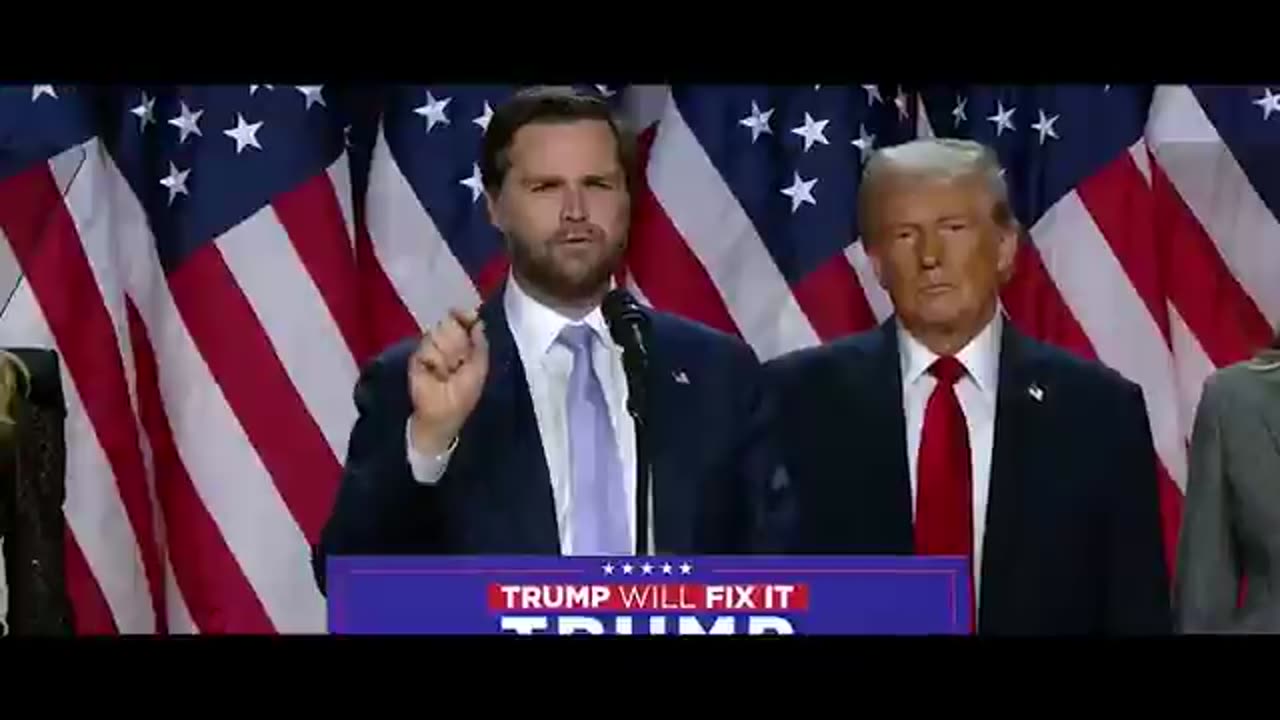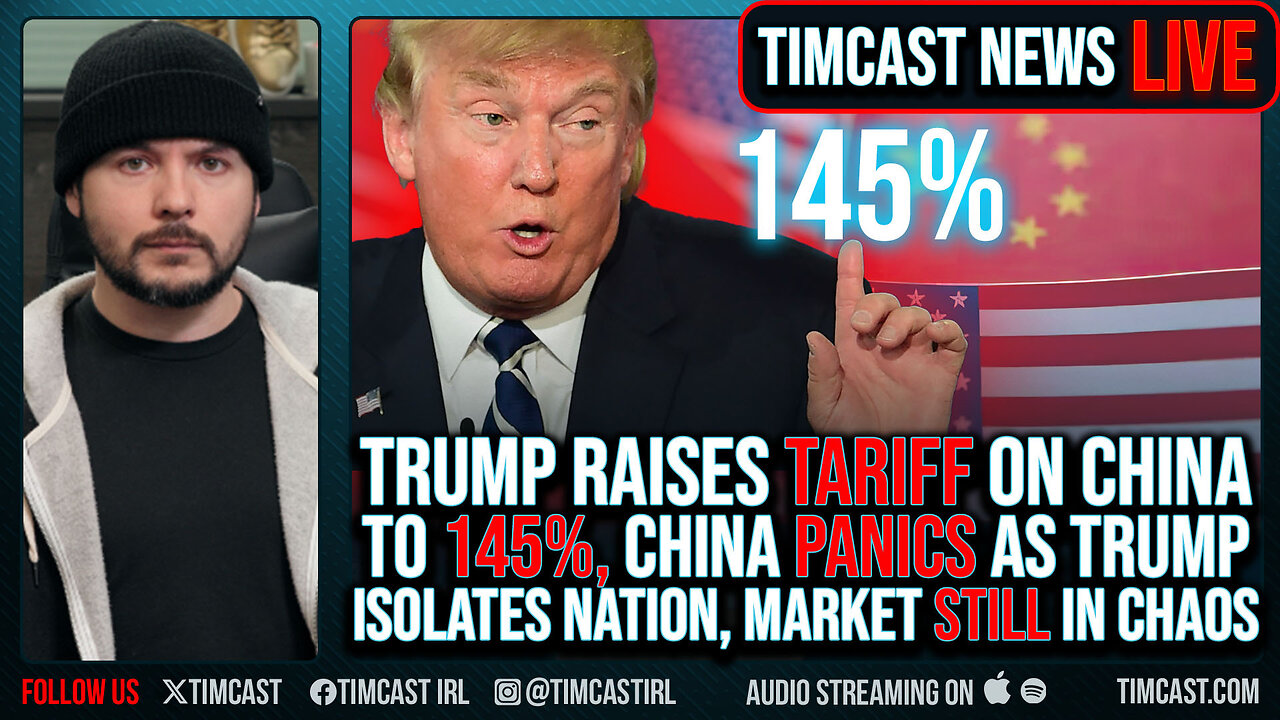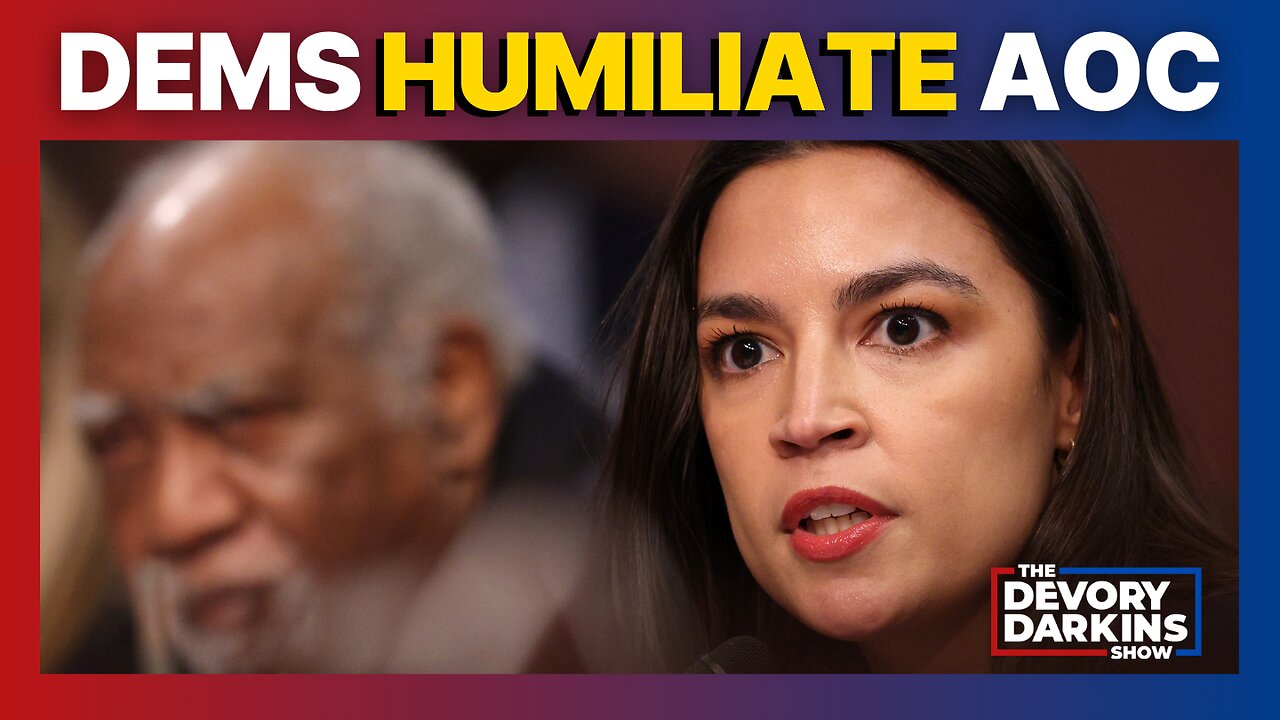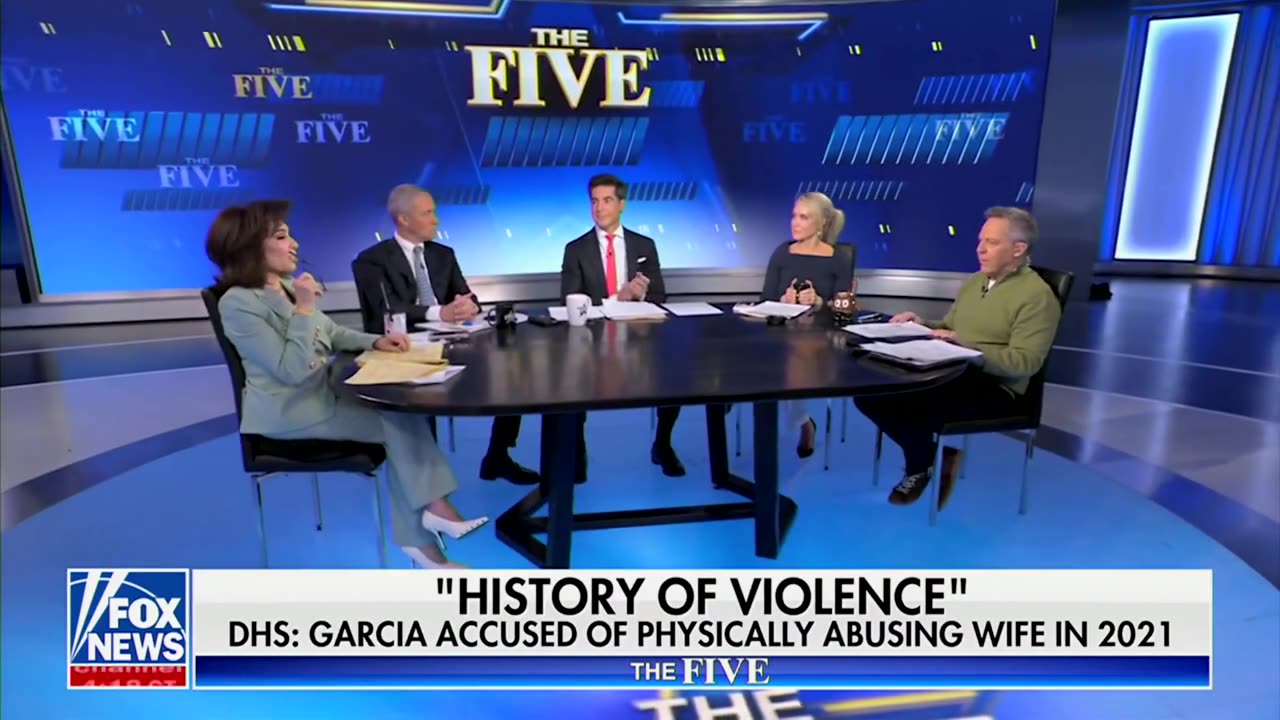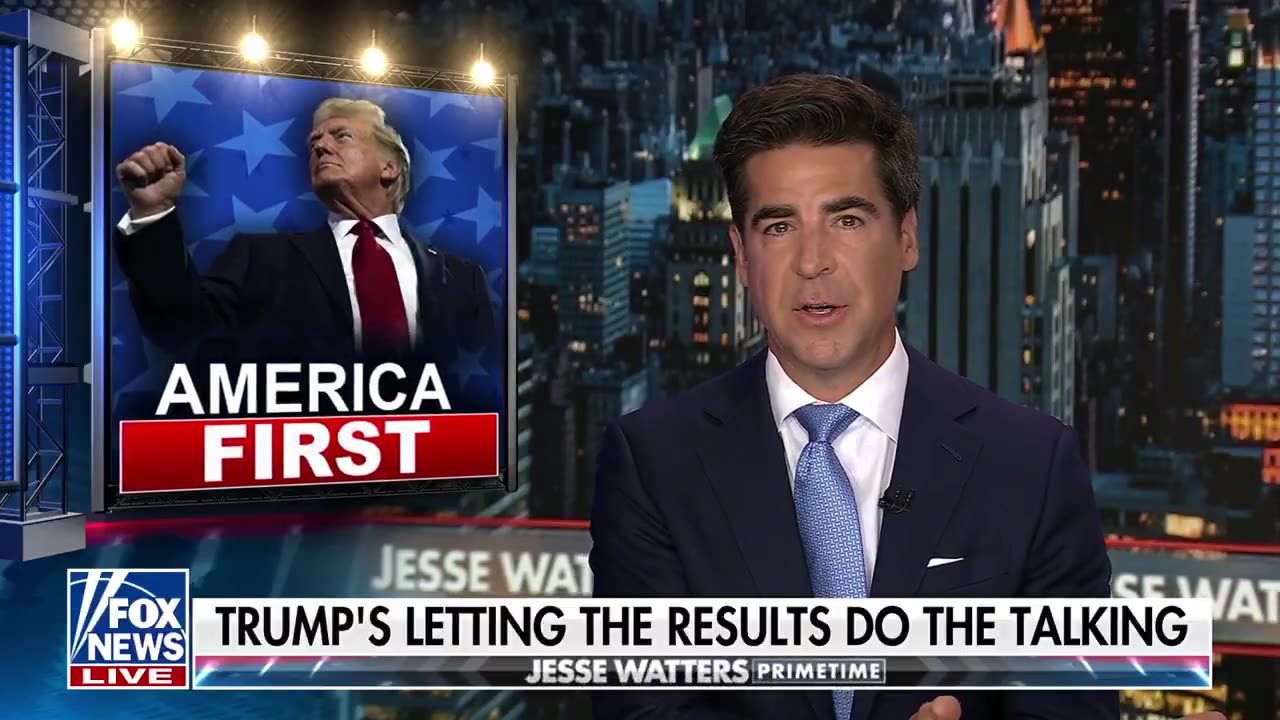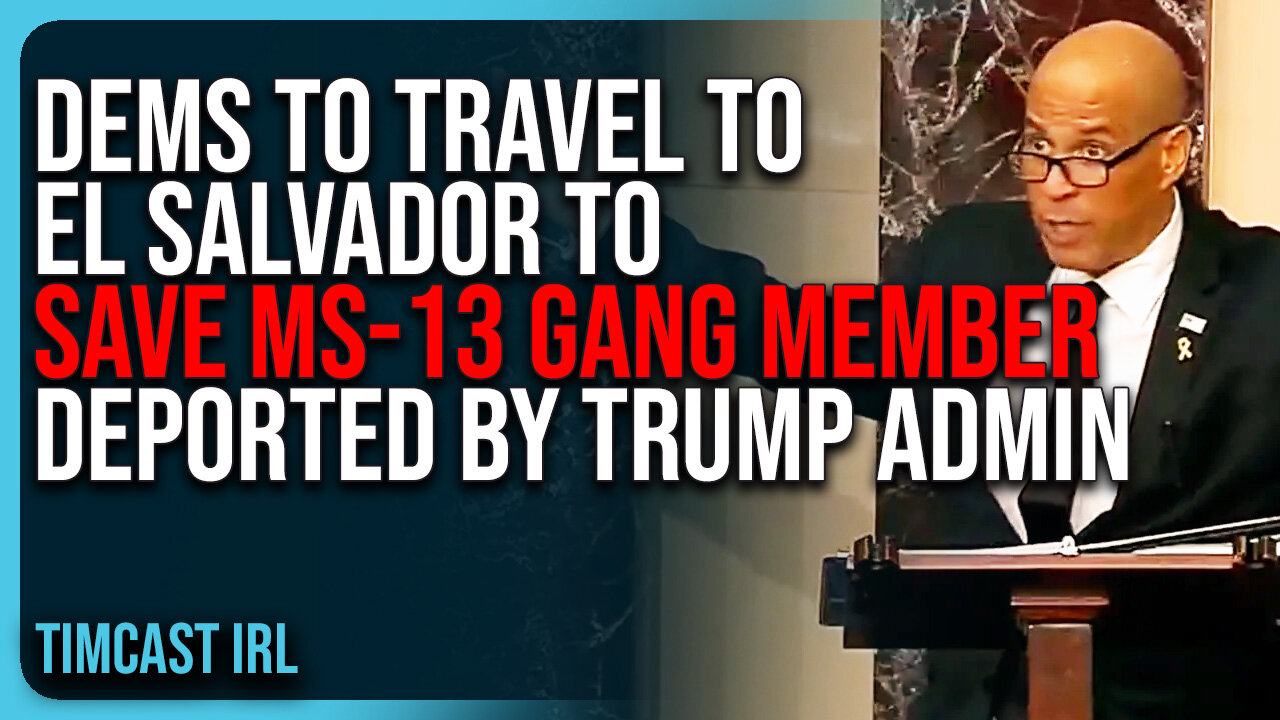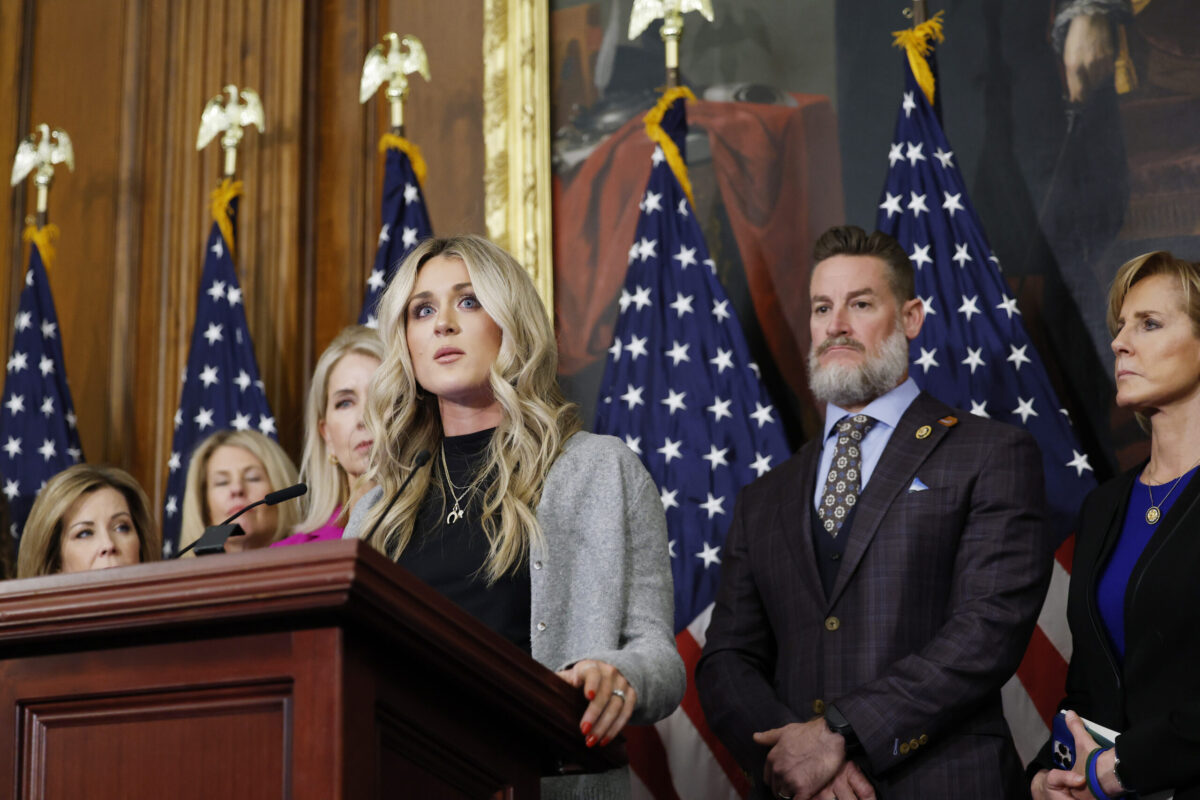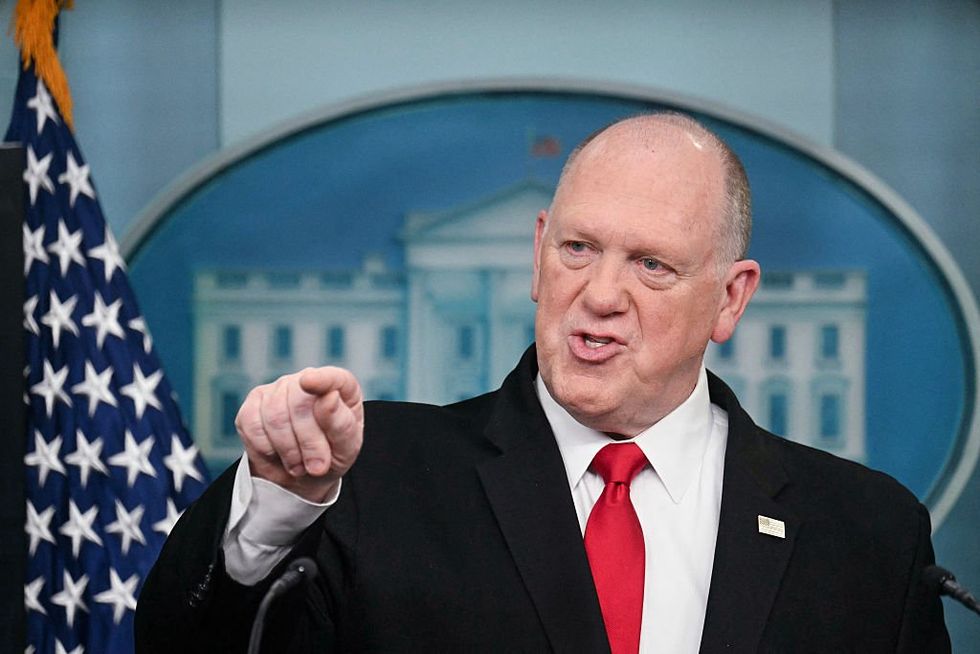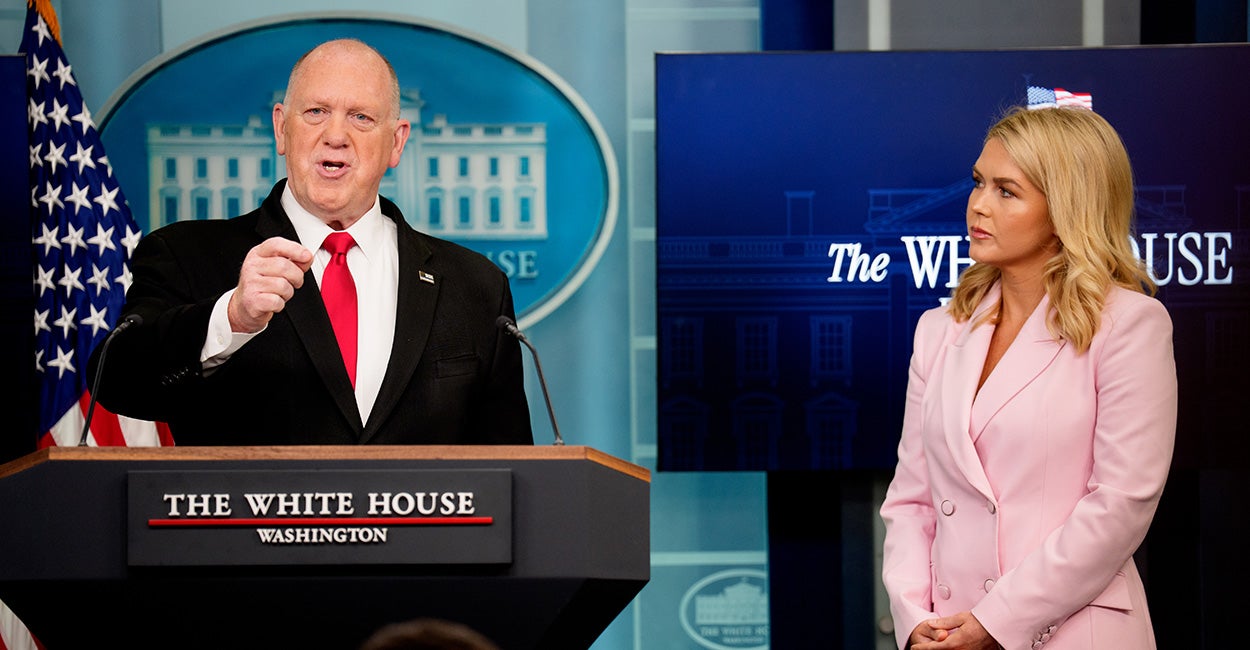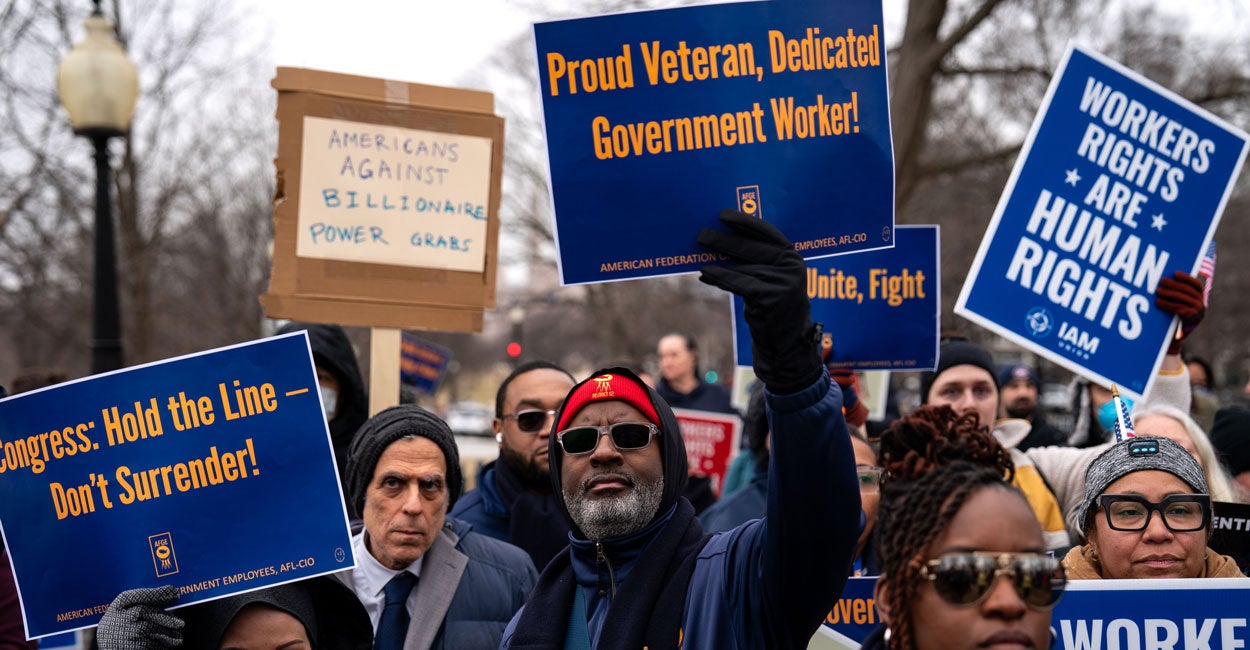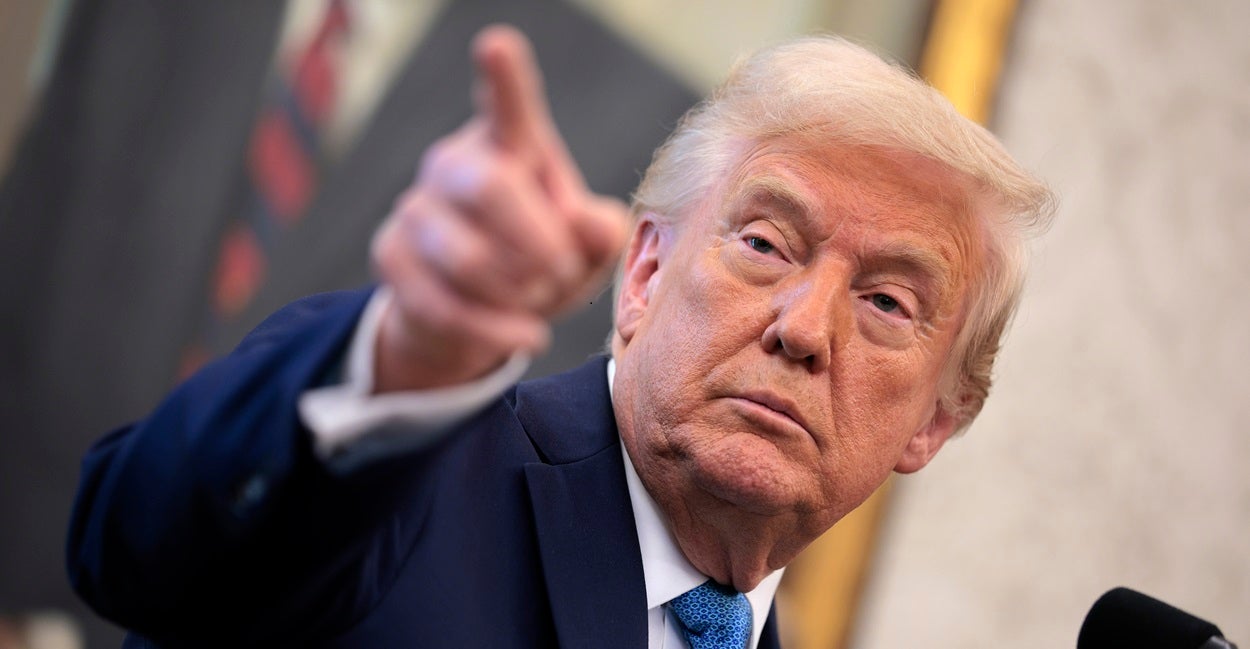4 Charts Show Why Congress Must Embrace Spending Restraint

This year, Congress is expected to pass at least one major legislative package through what is known as the reconciliation process, which enables easier passage for certain types of budgetary changes.
The top goal for reconciliation will be extending and improving on the success of the 2017 tax cuts, which were a big success for America. Businesses created jobs and workers enjoyed strong wage growth thanks to the better tax code, at least until the disastrous policies of the Biden administration whipped up the inflation crisis.
It’s vital for Congress to pair pro-growth tax cuts with pro-growth spending reforms. Not only is every dollar of spending guaranteed to lead to a dollar of taxes down the line, but the federal budget itself needs a serious overhaul.
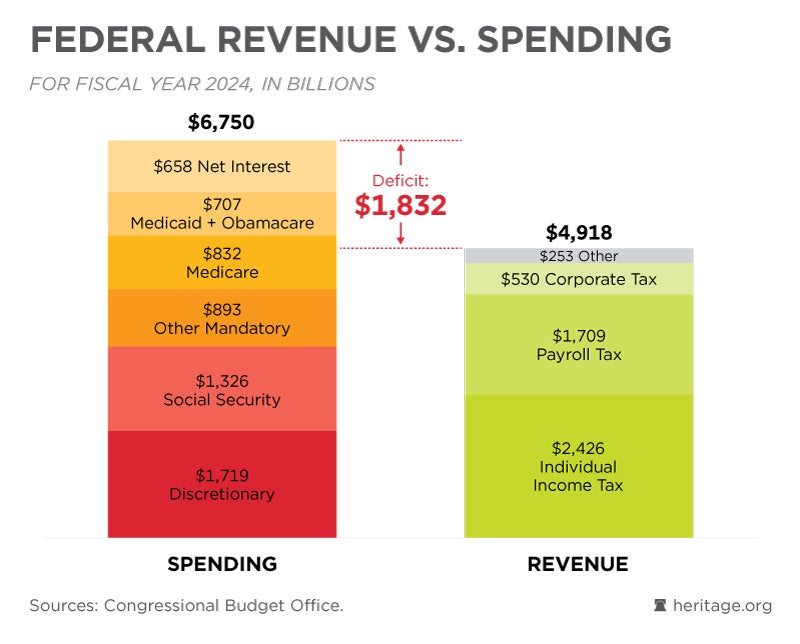
In fiscal year 2024, the federal government ran a $1.8 trillion deficit.
Historically, a deficit of over 6% of the size of the economy would only be caused by a major war or a hard recession.
However, there is no excuse for the sorry state of the budget today. Washington has allowed spending to grow unchecked in many areas and refuses to prioritize its core duties.
Despite what left-wing activists claim, tax revenue as a share of the economy is right around the historical average. The budget gap isn’t about the IRS failing to shake people down hard enough, but about Uncle Sam being too generous with other people’s money.
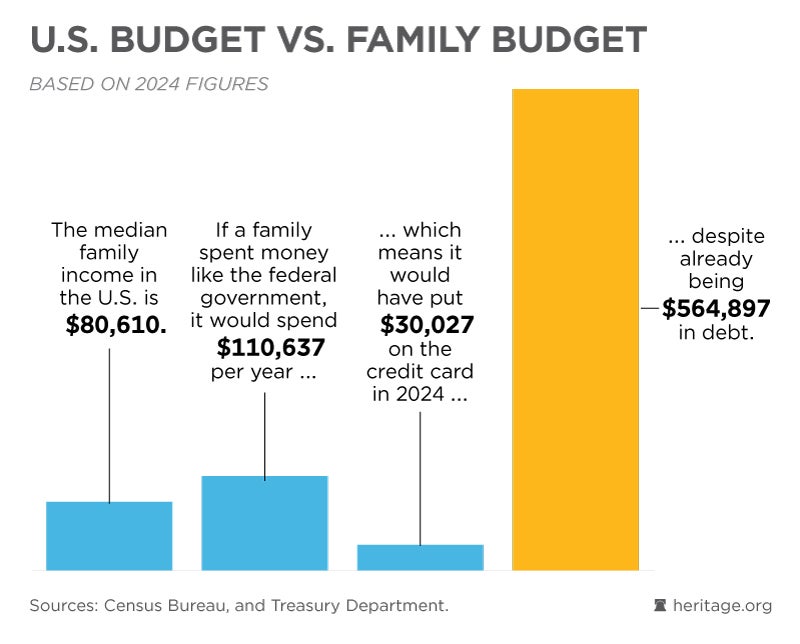
The numbers involved in the federal budget are usually too large for the human brain to comprehend.
To put in perspective how out of whack the budget is, let’s look at it as though the United States were a family.
A typical U.S. household has an income of $80,610. If they budgeted like Washington does, they would have spent $110,637 last year and put $30,027 on the national credit card while already having $564,897 in outstanding debt.
If a friend or family member was in that situation, you would tell them to take their finances seriously before they go broke. The same is true on a national scale, except that if the federal government goes bust, everyone will pay the price.
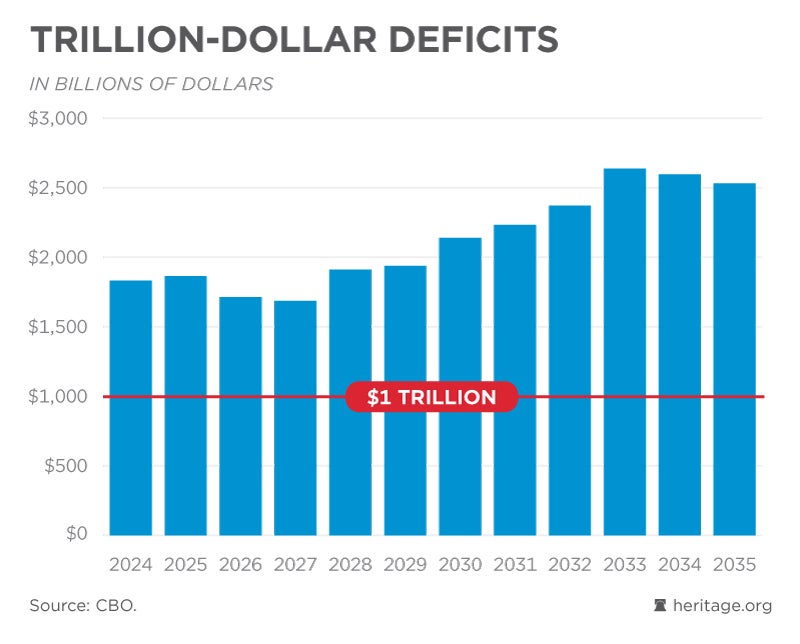
The large deficit in 2024 isn’t an outlier. The latest projections from the Congressional Budget Office show that unless something changes, deficits will stay above $1.5 trillion for the foreseeable future and begin to exceed $2 trillion per year by 2030.
Ignoring the problem will only make things worse.
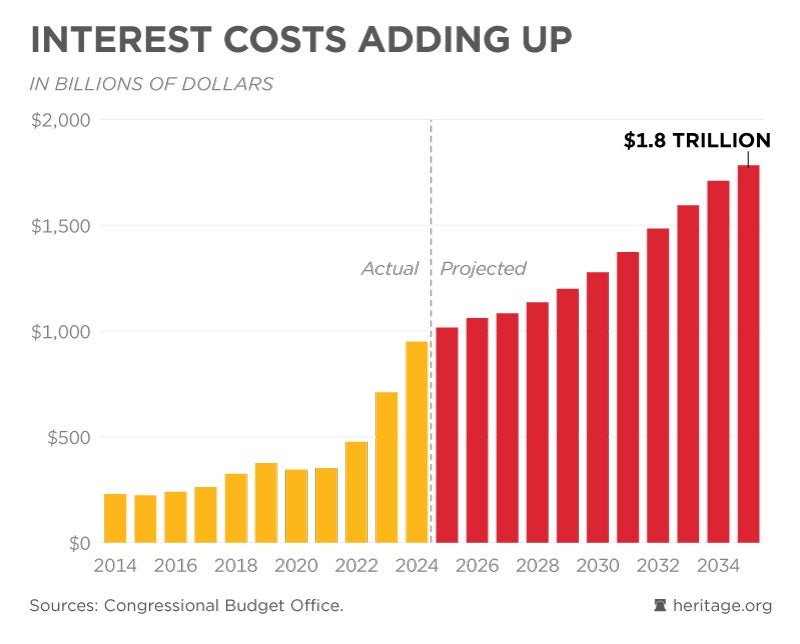
One of the most worrying budget trends is the explosive growth of interest payments on the national debt.
Congress was lulled into a false sense of security by years of ultra-low interest rates and allowed the national debt to pile up. However, now that interest rates have gone up across the board, America is paying a heavy price.
This leads to a vicious cycle.
First, interest payments eat up more and more tax revenue. Second, deficits increase, leading to more debt. Third, a larger debt leads to larger interest payments, and so on, and so on.
The only way to get a handle on this is for Congress to dramatically reduce deficit spending.
A combination of smaller deficits and economic growth would eventually bring interest payments down to earth even if the budget is never balanced–although a budget framework would speed up the process quite a bit.
The budget reconciliation process provides a vital opening for getting federal spending under control. Priorities for Congress include:
- Eliminating the misnamed Inflation Reduction Act, including both regular spending and spending done through the tax code, which increases deficits for the sake of the Green New Deal.
- Reforming healthcare programs, which are now the largest part of the budget. Changing how Medicare pays for treatments, ending the provider tax scam in Medicaid, and unwinding Obamacare would lower deficits and bolster Medicare’s trust fund.
- Reforming welfare programs, including the elimination of loopholes and benefit expansions initiated during the Biden administration.
In the coming months, expect that special interests who benefit from the swampy status quo to twist arms in Congress to prevent these spending cuts from happening.
The best way for Americans to ensure their representatives do the right thing is for their voices to be louder than Washington D.C.’s lobbyists.
If Congress thinks the public will hold them accountable, there will be a fighting chance for fiscal responsibility.
The post 4 Charts Show Why Congress Must Embrace Spending Restraint appeared first on The Daily Signal.
Originally Published at Daily Wire, Daily Signal, or The Blaze
What's Your Reaction?
 Like
0
Like
0
 Dislike
0
Dislike
0
 Love
0
Love
0
 Funny
0
Funny
0
 Angry
0
Angry
0
 Sad
0
Sad
0
 Wow
0
Wow
0













